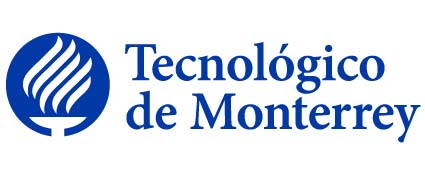
|
|||||
Disciplina asociada:Física |
|||||
Escuela:
Por definir
|
|||||
Departamento Académico:
Por definir
|
|||||
Programas académicos: |
|||||
Requisitos:(Examen institucional de Inglés 550-597 o Haber Cursado F3011) o Estar cursando al menos el periodo 6 |
|||||
Equivalencia:F 90042 ; TE3000 |
|||||
Intención del curso en el contexto general del plan de estudios: |
|||||
|
En este curso se proporciona un panorama general de los sistemas actuales de fibra óptica, su evolución a través del tiempo y las tendencias futuras. El alumno entenderá los principales conceptos de un sistema de transmisión óptica, por mencionar algunos, son: aspectos físicos de la fibra, ruido, arquitectura del sistema, capacidad requerida, distancia de transmisión, y formatos de modulación. Estos conceptos se analizarán a detalle para desarrollar una metodología de diseño de sistemas ópticos. Adicionalmente, se estudiará la optimización de redes, sistemas muticanal, protocolos SONET/SDH, redes de conmutación de paquetes. |
|||||
Objetivo general de la Unidad de Formación: |
|||||
|
El curso de Fibras Ópticas tiene el propósito de desarrollar en los
estudiantes la capacidad para analizar y diseñar sistemas de
telecomunicaciones ópticos de alta capacidad y promover la capacidad
de creatividad e innovación orientada al diseño de redes de nueva
generación. En este curso se proporciona un panorama general de los
sistemas actuales de fibra óptica, su evolución a través del tiempo y
las tendencias futuras. El alumno entenderá los principales conceptos
de un sistema de transmisión óptica, por mencionar algunos, son:
aspectos físicos de la fibra, ruido, arquitectura del sistema,
capacidad requerida, distancia de transmisión, y formatos de
modulación. Estos conceptos se analizarán a detalle para desarrollar
una metodología de diseño de sistemas ópticos. Debido que los sistemas
de transmisión óptica tendrán un gran desarrollo en los siguientes años
es necesario saber en detalle como funcionan y como se diseñan, para
hacer una adecuada planeación, selección de componentes ópticos,
equipo, y administración de estos sistemas en una organización |
|||||
Técnica didáctica sugerida: |
|||||
| Aprendizaje colaborativo | |||||
Bibliografía sugerida: |
|||||
|
LIBROS DE TEXTO: * Rajiv Ramaswami and Kumar N. Sivarajan, Optical Networks: A Practical Perspective, 2, Elsevier Science & Technology Books, English, 9780123740922 * Govind Agrawal, Fiber-Optic Communication Systems, Third Edition, Wiley Series in Microwave and Optical Engineering, Ingles, 13 978-0-471-21572-1 |
|||||
Perfil del Profesor: |
|||||
|
Experiencia recomendada: Tener experiencia en comunicaciónes ópticas, ya sea en la docencia, en la investigación o en la industria. |
|||||
|
|||||
Discipline:Physics |
|||||
School:
Undefined
|
|||||
Academic Department:
Undefined
|
|||||
Programs: |
|||||
Prerequisites:(Institutional TOEFL exam 550-597 or F3011) or period 6 |
|||||
Equivalences:F 90042 ; TE3000 |
|||||
Course intention within the general study plan context: |
|||||
|
Students will learn fundamental principles of the operation of optical components including the transmission of light through fiber, couplers, filters, lasers, and photodetectors, amplifiers, and switches. The performance characteristics of state-of-the-art optical components will be examined in the context of specification and performance of optical communication systems: transmissions, modulation and detection of optical signals. Additionally, students will study optical networks including optimization of network topologies, WDM transmission systems engineering, SONET/SDH, broadcast-and-select networks, and photonic packet switching. |
|||||
Course objective: |
|||||
|
Optical Fiber Communication Networks will provide a mechanism for practicing engineers to acquire up-to-date knowledge in this rapidly expanding field. The topics of the course are carefully tailored to provide a balanced in-depth exposition of optical communications technology that includes fundamentals of photonics, optical communication systems, state-of-the-art photonic communication devices and their integration into optical communications networks. Students will learn fundamental principles of the operation of optical components including the transmission of light through fiber, couplers, filters, lasers, and photodetectors, amplifiers, and switches. The performance characteristics of state-of-the-art optical components will be examined in the context of specification and performance of optical communication systems: transmissions, modulation and detection of optical signals. Additionally, students will study optical networks including optimization of network topologies, WDM transmission systems engineering, SONET/SDH, broadcast-and-select networks, and photonic packet switching. |
|||||
Teaching and learning tecniques: |
|||||
| Collaborative learning | |||||
Suggested Bibliography: |
|||||
|
TEXT BOOKS: * Rajiv Ramaswami and Kumar N. Sivarajan, Optical Networks: A Practical Perspective, 2, Elsevier Science & Technology Books, English, 9780123740922 * Govind Agrawal, Fiber-Optic Communication Systems, Third Edition, Wiley Series in Microwave and Optical Engineering, Ingles, 13 978-0-471-21572-1 |
|||||
Academic credentials required to teach the course: |
|||||
|
Recommended Experience: Have experience in optical communications as a teacher, researcher, or industry engineer |
|||||